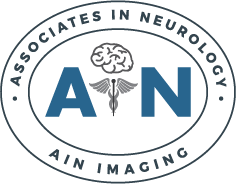Welcome to the Patient Education Library of Associates in Neurology and AIN Imaging
We invite you to explore our comprehensive list of resources and educational materials designed to help teach you about any orthopedic condition you may face or treatment you may undergo. Simply choose a topic below to learn more.
If you have any questions or concerns regarding your condition or treatment, please feel free to contact Associates in Neurology and AIN Imaging in Farmington Hills, Michigan, at (248) 478-5512. To request an appointment, use our secure online appointment request form.
This information is intended for educational and informational purposes only. It should not be used in place of an individual consultation, examination, or the medical advice of your doctor. This information should not be relied upon to determine a diagnosis or course of treatment.
-
Acoustic Neuroma
The inner ear is responsible for hearing and balance. Acoustic neuroma is a tumor that develops on the nerve in the inner ear. Acoustic neuroma is also called vestibular schwannoma. The vast majority of acoustic neuromas are not cancerous and are ... Read More
-
Arachnoid Cyst - Brain & Spinal Cord
Arachnoid cysts develop in the brain and only rarely in the spinal cord. The cysts develop when a layer of tissue separates and fills with fluid, forming a cyst. The arachnoid membrane is a layer of the protective covering of ... Read More
-
Arteriovenous Malformation (AVM)- Brain
Cerebral arteriovenous malformation (AVM) is a rare condition that occurs in the brain of less than 1% of all people. An AVM is an abnormal tangle of blood vessels that develops between the arteries and veins. AVMs are fragile structures ... Read More
-
Astrocytoma - Common CNS Tumor
Astrocytoma is a common type of brain tumor. There are different types and severities of astrocytomas. They may or may not be cancerous. Astrocytomas may be treated with surgery, radiation therapy, chemotherapy, or a combination of treatments. ... Read More
-
Attention Deficit Disorder (ADD)
Attention Deficit Disorder (ADD) is a neurologically based condition. People with ADD have difficulty paying attention, maintaining their focus on a task, and are easily distracted. They may move from one task to the next without completing any of them. ... Read More
-
Attention Deficit Hyperactive Disorder (ADHD)
Attention Deficit Hyperactive Disorder (ADHD) is a neurologically based disorder. People with ADHD have difficulty maintaining attention, act before thinking, and are hyperactive or restless. Untreated ADHD can be problematic and disrupt school or work performance, as well as social ... Read More
-
Balance Retraining and Vestibular Rehabilitation
Balance retraining and vestibular rehabilitation are used to treat balance disorders and movement related dizziness. Balance is a complex function that involves the coordination of many body systems. Balance requires the ability to produce movements and interpret information about your ... Read More
-
Brain Tumors
Brain tumors are a rare condition that results when cells grow abnormally and form a mass. Brain tumors may originate in the brain or spread from cancer in another part of the body. There are many different types of brain ... Read More
-
Carpal Tunnel Syndrome (CTS)
Carpal Tunnel Syndrome is a common condition that affects the hand and wrist. It occurs when the Median Nerve in the wrist is compressed. Nerves carry messages between our brains, spinal cord, and body parts. The Median Nerve carries signals for sensation and ... Read More
-
Cavernous Malformation - Blood Vessel Mass
Cavernous malformations are irregularities in the capillaries in the brain or spinal cord. They are referred to by several other names including cavernous hemangioma, cavernoma, cerebral cavernous malformation (CCM), familial hemangioma, nevus cavernosus, and cavernous angioma. Capillaries are the tiny ... Read More
-
Cervical Degenerative Disc Disease - Spinal Cord and Nerve Compression
Cervical degenerative disc disease is a condition that can compress the spinal cord and nerves in the neck. Intervertebral discs are shock-absorbing pads located between vertebrae, the small bones that make up your spine. Aging can cause the discs to ... Read More
-
Cervical Radiculopathy - Cervical Nerve Compression
Cervical radiculopathy is a condition that results when a nerve is pinched or irritated as it leaves the spine in the neck. Nerves from the spinal cord exit at various levels from the spine and travel throughout the body. With ... Read More
-
Cervical Spondylitic Myelopathy - Spinal Cord Compression
Cervical spondylitic myelopathy is a condition that affects the spinal cord in the neck. It is the most common spinal cord disorder in the United States. Cervical spondylitic myelopathy most frequently occurs in adults because of degenerative changes in the ... Read More
-
Cluster Headache
Cluster headaches are named so because they occur in predictable patterns, often as regular as clockwork. They are one of the most painful types of headaches. Fortunately, treatments and medication can help reduce symptoms and the number of headache episodes. ... Read More
-
Complex Regional Pain Syndrome (CRPS) - Reflex Sympathetic Dystrophy (RSD)
Complex regional pain syndrome (CRPS) is a type of chronic pain syndrome. CRPS was formerly called reflex sympathetic dystrophy (RSD) and shoulder-hand syndrome. CRPS causes severe burning pain and possible eventual deterioration of an affected arm or leg. The cause ... Read More
-
Concussion (TBI)
A concussion is a traumatic brain injury (TBI) that occurs from a direct hit to the head. Concussions can also occur when the head or body is forcefully shaken. Brain injuries can lead to temporary confusion, headaches, and much more. ... Read More
-
Depression
Depression is a real medical condition that is treatable. Depression is not a “normal part” of every day life. Common symptoms of depression include feeling sad, irritable, tired, and uninterested in activities that used to be enjoyable. Everyone feels this ... Read More
-
Electromyography (EMG) - Nerve Test
Electromyography (EMG) is an electrodiagnostic test that measures the nerve impulses in muscles during contraction. Nerves throughout the body exchange information with the brain through nerve impulses. Healthy muscles need nerve input to perform movements. Doctors use EMG to identify muscle ... Read More
-
Epilepsy
Epilepsy is a disorder that is caused by a surge of abnormal nerve signals in the brain. Repeated seizures are the main symptom of epilepsy. In many cases, the cause of epilepsy is unknown. Treatment for epilepsy involves medications, dietary ... Read More
-
Generalized Anxiety Disorder
Generalized anxiety disorder is a common type of anxiety disorder. People with generalized anxiety disorder experience excessive worry and anxiety over daily circumstances. They may feel that they have little control over their internal tension and it may interfere with ... Read More
-
Hemangioblastoma - Brain & Spinal Cord
Hemangioblastomas are noncancerous tumors that develop in the brain or spinal cord. Some hemangioblastomas are caused by an inherited disorder; others occur sporadically. The tumors may cause a host of neurological symptoms, depending on their size and location. In most ... Read More
-
Low Back Pain
The vertebrae in your lower back are larger than in any other part of your spine. Vertebrae are the series of bones that align to form your spine. The spinal section in your lower back is called the lumbar spine. ... Read More
-
Metastatic Brain Tumor
A metastatic brain tumor is cancer that has spread to the brain from a primary cancer site located somewhere else in the body. Cancer of the lungs, breast, or kidney, can spread through the bloodstream and to the brain. The focus ... Read More
-
Migraine Headache
Migraine headache pain can be severe and accompanied by nausea, vomiting, and sensitivity to odors, light and sound. If untreated, migraine symptoms can be so severe that people need to lie down for a few hours or days. Although there ... Read More
-
Neck Pain
The neck is a very vulnerable part of the spine. It is susceptible to injury. Muscle, ligament, nerve, and spine injuries are common causes of neck pain. Poor posture and “wear and tear” can also cause neck pain. Degenerative diseases, ... Read More
-
Nerve Conduction Velocity (NCV) Test
A Nerve Conduction Velocity (NCV) Test is an electrodiagnostic procedure that measures how well a nerve works and helps to specify the site of nerve compression. Nerves carry messages between the brain and body. Many conditions, such as tissue swelling, ... Read More
-
Neuropathy - Nerve Pain
Neuropathy, also referred to as neuralgia or neuritis, is a type of pain that involves the nerves. Neuropathy results from nerve degeneration, pressure, inflammation, or infection. There are several causes of neuropathy, including carpal tunnel syndrome, pinched nerves, spinal stenosis, ... Read More
-
Peripheral Neuropathy
Peripheral neuropathy is a symptom rather than a disease in itself. It occurs when nerves are damaged resulting in pain and loss of function, such as motor movement or the sense of touch. Peripheral neuropathy commonly develops in the longest ... Read More
-
Phantom Limb Pain
Phantom limb pain is a real condition that occurs in some people after the amputation of an arm or leg. People with phantom limb feel pain as if the amputated limb is still there. The exact mechanism of phantom limb ... Read More
-
Restless Legs Syndrome
Restless legs syndrome (RLS) is a condition that causes odd sensations in the legs and an urgency to move the legs. The symptoms become worse while resting or lying down to fall asleep. RLS is not a life-threatening condition, but ... Read More
-
Spinal Cord Tumors
Spinal cord tumors may originate in the spinal cord or result from the spread of cancer from another location in the body. Your spinal cord transmits sensory, movement, and reflex information between your brain and body. Spinal cord tumors need ... Read More
-
Stroke - CVA
A stroke or a “brain attack” is an emergency medical condition. It occurs when the blood supply to the brain is stopped or reduced for a period of time. Your brain controls the life sustaining functions of your body. It ... Read More
-
Tension Headache
Tension headaches are the most common type of primary headache, meaning that they are not caused by an underlying medical disorder. Most people will experience a tension headache in their lifetime. They occur most frequently between the ages of 20 ... Read More
-
Vertigo
Vertigo is the sensation of spinning or false movement. It can result from trauma, infection, or diseases that affect the inner ear. Vertigo is usually a harmless condition but a doctor should evaluate it. Vertigo may be treated with medications, ... Read More
-
Whiplash
Whiplash occurs when the head moves suddenly from severe impact, such as during a car crash. Whiplash can cause neck pain, upper back pain, shoulder pain, tight muscles, and burning or tingling sensations in your neck or upper back. Most ... Read More

Copyright © - iHealthSpot Interactive - www.iHealthSpot.com
This information is intended for educational and informational purposes only. It should not be used in place of an individual consultation or examination or replace the advice of your health care professional and should not be relied upon to determine diagnosis or course of treatment.
The iHealthSpot patient education library was written collaboratively by the iHealthSpot editorial team which includes Senior Medical Authors Dr. Mary Car-Blanchard, OTD/OTR/L and Valerie K. Clark, and the following editorial advisors: Steve Meadows, MD, Ernie F. Soto, DDS, Ronald J. Glatzer, MD, Jonathan Rosenberg, MD, Christopher M. Nolte, MD, David Applebaum, MD, Jonathan M. Tarrash, MD, and Paula Soto, RN/BSN. This content complies with the HONcode standard for trustworthy health information. The library commenced development on September 1, 2005 with the latest update/addition on February 16, 2022. For information on iHealthSpot’s other services including medical website design, visit www.iHealthSpot.com.


